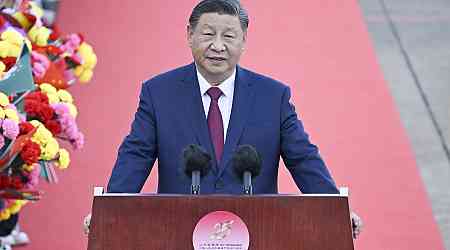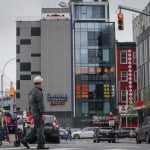Analysis
T Greater Bay Area, Beijing’s attempt to unite nine cities in Guangdong with Hong Kong and Macau into an economic powerhouse and rival the New York metropolitan area and the San Francisco Bay Area, has been discussed many times but, according to experts, is still as exciting a prospect for Hong Kong as ever.
The Greater Bay Area comprises of Hong Kong, Macau, and nine municipalities of Guangzhou, Shenzhen, Zhuhai, Foshan, Huizhou, Dongguan, Zhongshan, Jiangmen, and Zhaoqing in Guangdong province. The total area is around 56,000 sq km and based on the data from 2023, it has over 86 million people and a GDP of almost $2trn.
To put this in perspective, the Greater Bay Area alone is just behind Canada in terms of GDP and ranks 11th in the world. Beijing sees the creation of the area as a key part of the country’s development plans but the same can be said for Hong Kong.
“Hong Kong sees deeper integration with the GBA as essential for its future, greatly enriching the life chances of its people. For example in Shenzhen, right next door to Hong Kong are headquartered three of the most innovative tech companies in the world – BYD, one of the world’s largest EV companies; Huawei, one of the largest makers of cellphones and infrastructure for the internet; and Tencent, which is the company behind WeChat, the world’s biggest super-app,” says Richard Hext, chairman of Vanmar Shipping.
Gautam Chellaram, the executive chairman of KC Maritime, believes the same thing. He says that the initiative could create significant opportunities for the maritime industry, including enhanced trade connectivity, infrastructure development, and increased demand for shipping services.
“With its strategic location and well-established infrastructure and expertise in maritime technology, Hong Kong is poised to play a pivotal role in facilitating the transportation of goods within the Greater Bay Area. The initiative also presents opportunities for collaboration on technological advancements and sustainable practices within the shipping industry,” Chellaram says.
The KC Maritime man adds that the Greater Bay Area will foster economic integration, improve connectivity, and stimulate growth across various sectors.
This means that the road ahead is not yet fully clear. Cara Carter, global managing director of Halcyon Recruitment, thinks the most exciting prospect for Hong Kong is to see how it will fit into China’s overall growth strategy.
The area will also, hopefully, provide a united front for all those involved in the project and that could, with a little bit of coordination, result in less internal competition and more towards markets outside the GBA.
“We see that there should be more coordination at government-level so that we could achieve growth for all ports in GBA and Hong Kong can focus on competition against other international transhipment markets such as Singapore, South Korea, Malaysia, etc,” says Horace Lo, group managing director of Modern Terminals Limited.
This is not seen as the only possible outcome. Gary Wong from Hill Dickinson, a law firm, sees a possible double-edged sword situation. He does see a noticeable increase in competitiveness between the ports in the GBA and thinks the competition can be a good incentive for positive change. But it could also do something completely different.
“Other than the physical proximity of Hong Kong and its GBA counterparts, developments across the GBA also means upgrades and advancements in various mainland Chinese ports. Cooperation between GBA ports will only foster mutual improvement, but can also mean that other ports within the GBA could be more attractive to specific stakeholders,” Wong says.
The Greater Bay Area region is the largest urban corridor in the world but each city within it has a different specialisation which is mutually beneficial and where collaboration and good connectivity would be key.
Greater connectivity facilitating the flow of goods, services and people generally has a positive effect on trade, shipping, and logistics activities, according to Firoze Mirza, managing director of BSM Hong Kong. This can, in turn, boost Hong Kong’s maritime industry as infrastructure development progresses and the massive economic potential is being used to the fullest.
“With Hong Kong’s more limited supply of land and status as an international maritime centre, the extension of port and maritime services further afield offers potential for growth alongside the establishing of operational synergies with the GBA’s two other major container ports – Shenzhen and Guangzhou,” says Bjorn Hojgaard, CEO of shipmanagement firm Anglo-Eastern.
He sees trade being done faster and cheaper forging increased demand between markets, especially if it is coupled with the Belt and Road Initiative and implementation of more digital technology solutions. According to Hojgaard, sea transportation and ports will be the central part of the equation.
“Assuming tighter alignment, Hong Kong’s strengths in high value-added services including ship management, ship finance, ship leasing, marine insurance, maritime law and dispute resolution services could also be leveraged, creating expanded business opportunities for Hong Kong companies,” he adds.
Another positive of this in his eyes is the possibility of a massively increased talent pool which could be found across the border as well as perspectives of cross-pollinating innovation in the sector.
This, however, will be a slow process, which Hojgaard concedes as well as saying that there are still many unanswered questions. All those questions will be answered in the coming decade as we head towards 2035 when the Greater Bay Area is supposed to be fully developed. By Splash, MDT/Splash
































